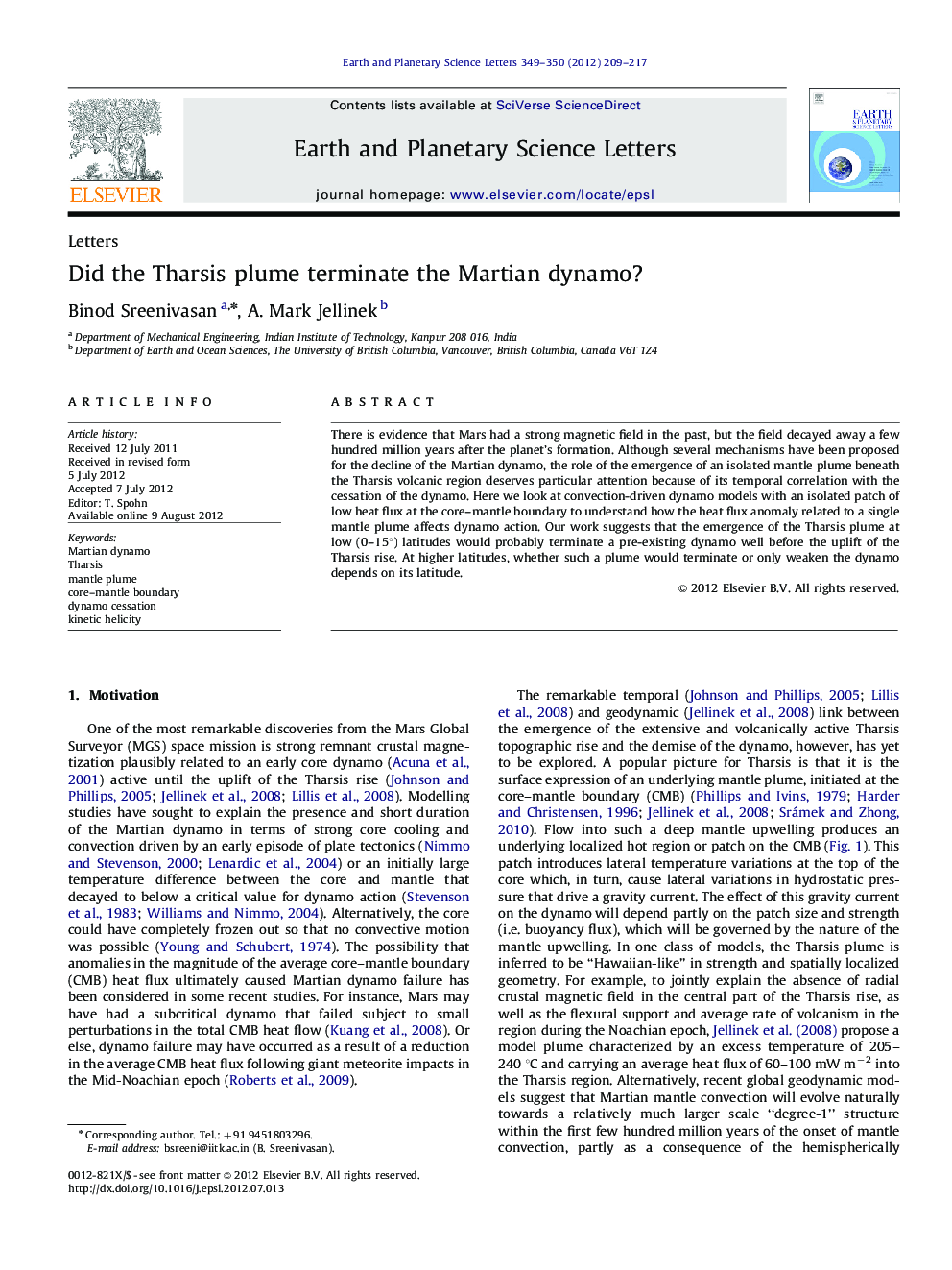| Article ID | Journal | Published Year | Pages | File Type |
|---|---|---|---|---|
| 4677409 | Earth and Planetary Science Letters | 2012 | 9 Pages |
There is evidence that Mars had a strong magnetic field in the past, but the field decayed away a few hundred million years after the planet's formation. Although several mechanisms have been proposed for the decline of the Martian dynamo, the role of the emergence of an isolated mantle plume beneath the Tharsis volcanic region deserves particular attention because of its temporal correlation with the cessation of the dynamo. Here we look at convection-driven dynamo models with an isolated patch of low heat flux at the core–mantle boundary to understand how the heat flux anomaly related to a single mantle plume affects dynamo action. Our work suggests that the emergence of the Tharsis plume at low (0–15°) latitudes would probably terminate a pre-existing dynamo well before the uplift of the Tharsis rise. At higher latitudes, whether such a plume would terminate or only weaken the dynamo depends on its latitude.
► We explore the effect of the Tharsis mantle plume on the Martian dynamo. ► An isolated plume in the Martian mantle could have terminated the core dynamo. ► The effect of the plume depends on its latitude as well as the strength of core convection.
